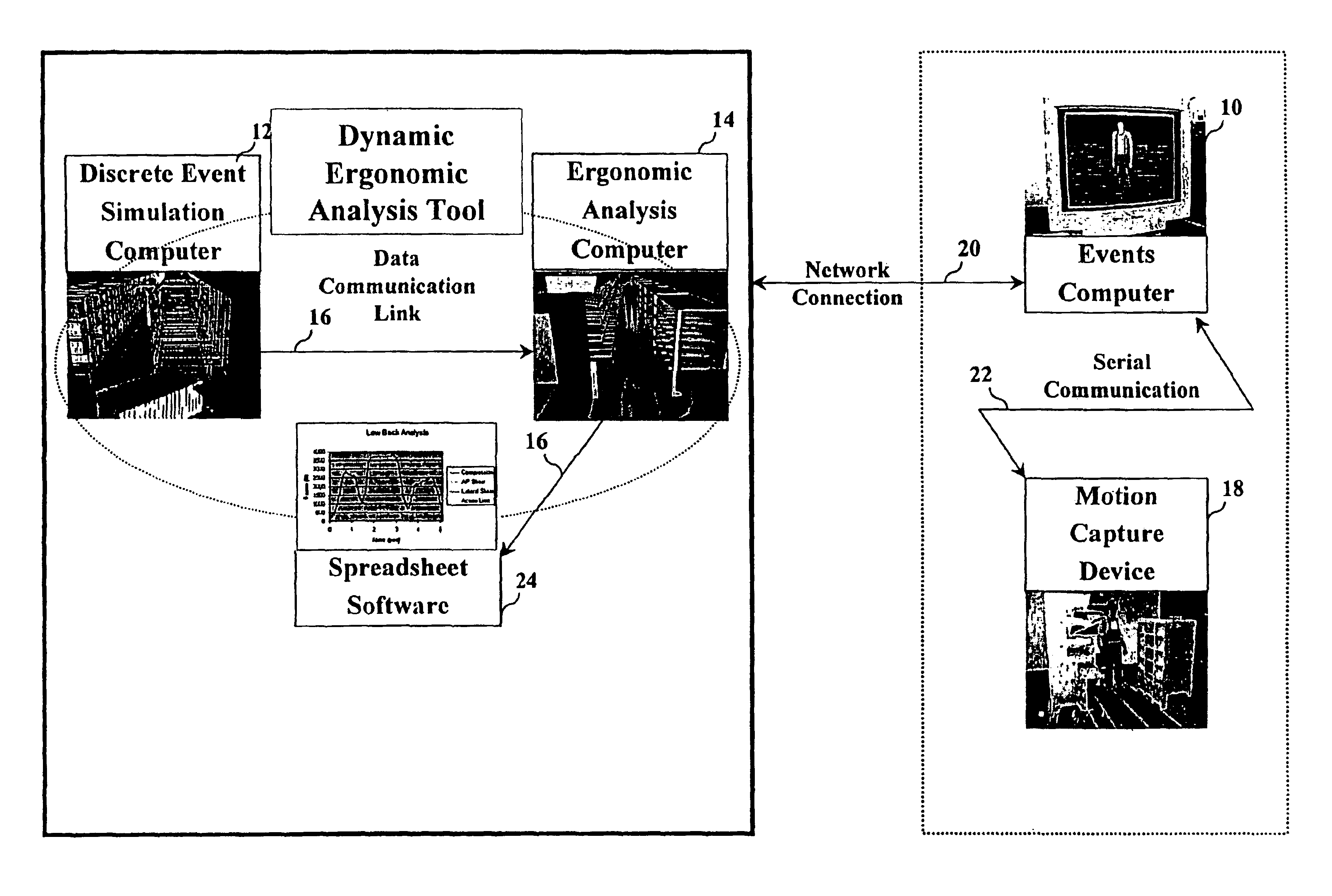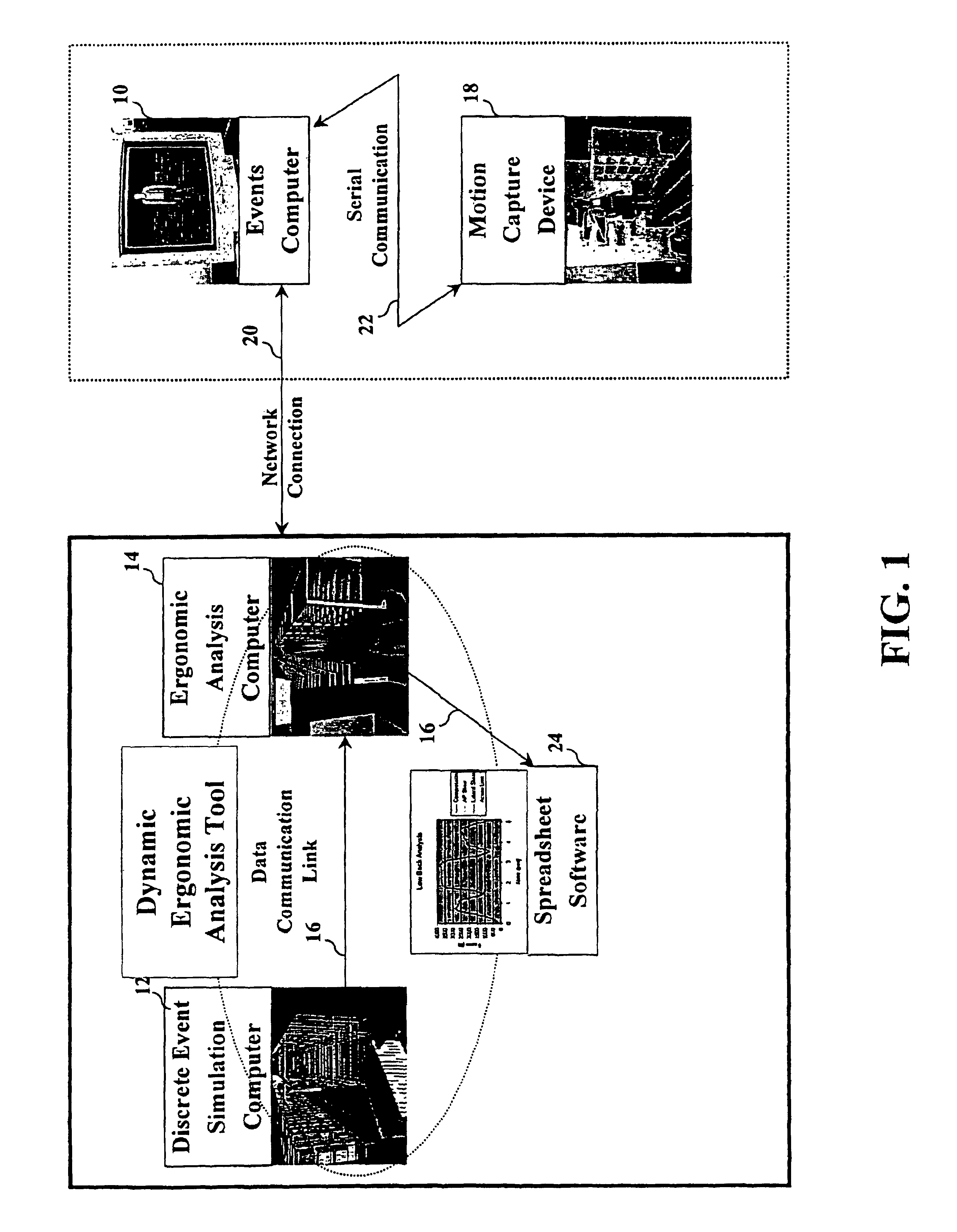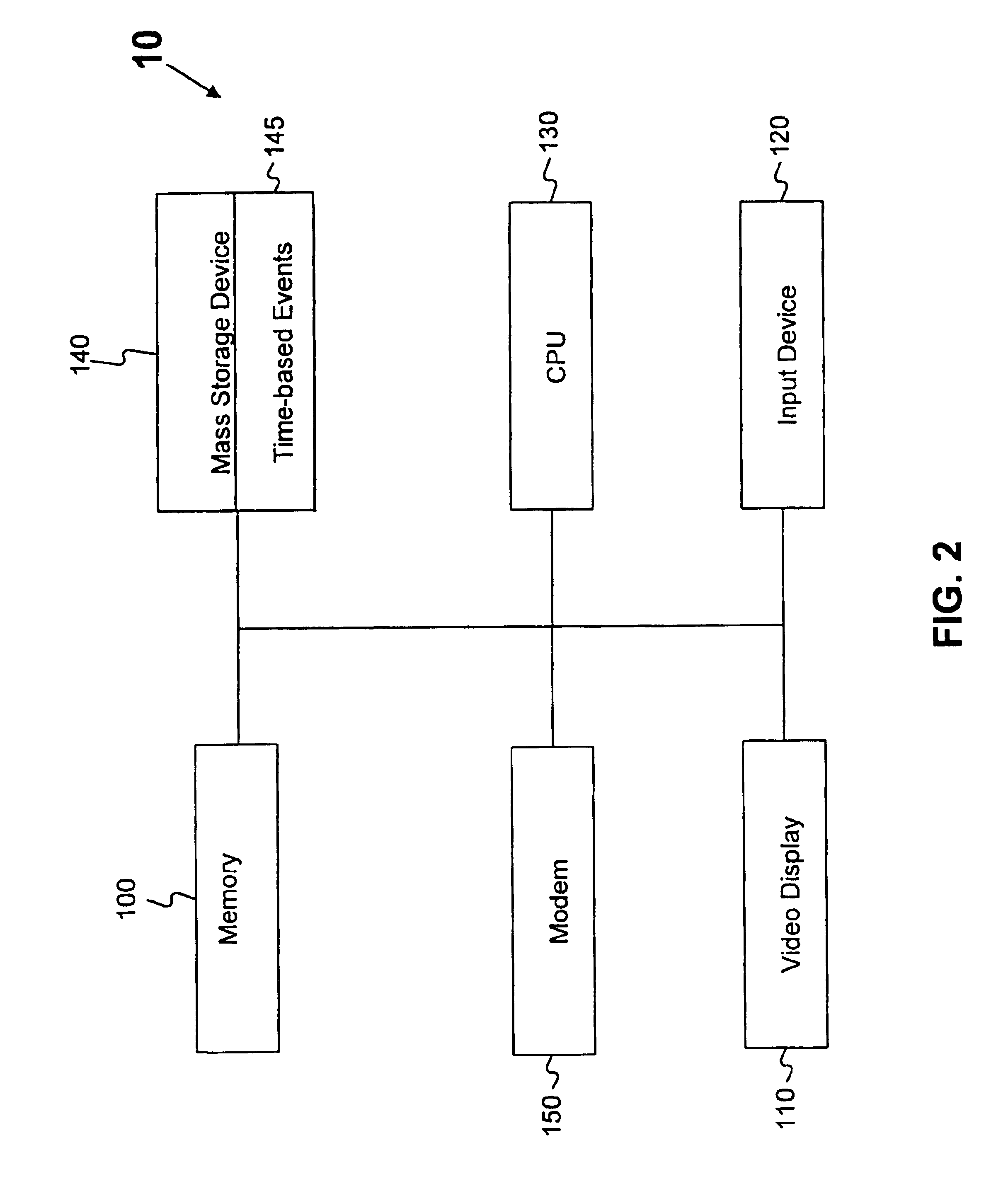System and method for performing discrete simulation of ergonomic movements
a discrete simulation and ergonomic technology, applied in the field of system and method for analyzing ergonomic movements, can solve the problems of not providing the full scope of an objective evaluation, not convenient for “live” reenactment of modeling complex tasks and activities, and save a significant amount of time and financial resources. , to achieve the effect of high synchronization and minimal data transfer tim
- Summary
- Abstract
- Description
- Claims
- Application Information
AI Technical Summary
Benefits of technology
Problems solved by technology
Method used
Image
Examples
Embodiment Construction
[0021]In the following detailed description of an embodiment, consistent with the invention, reference is made to the accompanying drawings that form a part thereof, and in which is shown by way of illustration a specific embodiment in which the invention may be practiced. This embodiment is described in sufficient detail to enable those skilled in the art to practice the invention and it is to be understood that other embodiments may be utilized and that structural changes may be made without departing from the scope of the present invention. The following detailed description is, therefore, not to be taken in a limited sense.
[0022]Embodiments consistent with the invention, as described herein, are implemented as logical operations in a computing system. The logical operations are implemented: (1) as a sequence of computer implemented steps running on the computing system and (2) as interconnected machine modules within the computing system. The implementation is a matter of choice...
PUM
 Login to View More
Login to View More Abstract
Description
Claims
Application Information
 Login to View More
Login to View More - R&D
- Intellectual Property
- Life Sciences
- Materials
- Tech Scout
- Unparalleled Data Quality
- Higher Quality Content
- 60% Fewer Hallucinations
Browse by: Latest US Patents, China's latest patents, Technical Efficacy Thesaurus, Application Domain, Technology Topic, Popular Technical Reports.
© 2025 PatSnap. All rights reserved.Legal|Privacy policy|Modern Slavery Act Transparency Statement|Sitemap|About US| Contact US: help@patsnap.com



